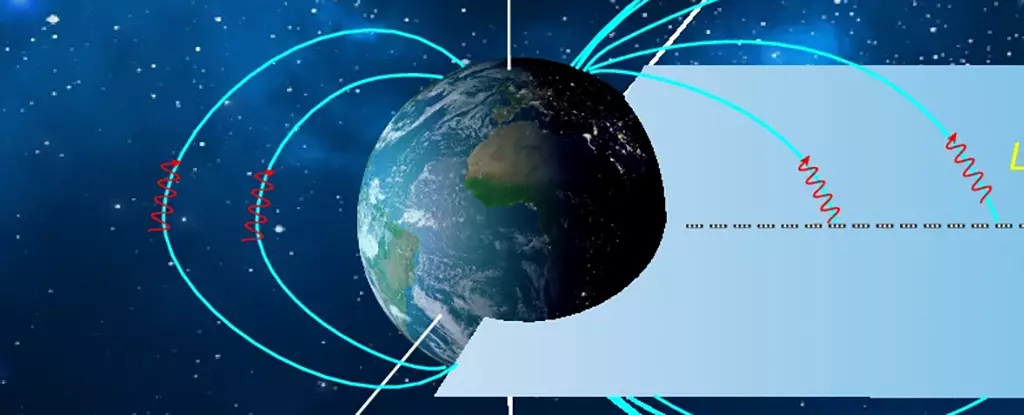In a surprising revelation, an international consortium of astronomers has uncovered peculiar chirping signals emanating from a previously unexplored region of space. These signals, known as chorus waves, are bursts of electromagnetic radiation that rise above the Earth’s atmosphere. When these waves are translated into sound, they resemble the delightful chirping of birds, igniting curiosity about their origins and mechanisms within stellar environments. For decades, the scientific community has accepted that chorus waves arise due to plasma instabilities—regions of ionized gas that fall out of equilibrium, radiating electromagnetic waves in intricate patterns.
Despite the long-standing knowledge about chorus waves, a remarkable aspect of their detection has emerged. Traditionally, these signals were detected up to a distance of 51,000 kilometers (approximately 31,690 miles) above Earth, where the magnetic field resembles that of a standard dipole. This conventional understanding proposed that such well-organized magnetic environments are essential for the generation of plasma instabilities. However, recent studies have expanded the horizon, revealing that chorus waves were detected at a distance of 165,000 kilometers (about 102,526 miles) from Earth. This measurement indicates a region where the magnetic field exhibits substantial distortion, challenging the previous notions about the exclusive link between chorus waves and orderly magnetism.
The pivotal research that led to these findings utilized high-resolution imagery obtained from NASA’s Magnetospheric Multiscale (MMS) satellite mission, launched in 2015. Scientists employed this advanced technology to probe the radio-frequency emissions that characterize these enigmatic waves. The results indicated a striking constancy in the properties of these signals, suggesting the possibility of their generation beyond the confines of a dipolar magnetic structure. This discovery encourages a reconsideration of the conditions necessary for the formation of chorus waves, indicating that they might emerge in a variety of environments throughout the cosmos.
In a fascinating development, researchers also observed a previously theorized process: the interplay of energy between plasma particles and chorus waves. This interaction occurs in regions devoid of electrons, commonly referred to as electron holes. The findings demonstrated that the phenomenon known as electron cyclotron resonance is a driving force behind the distinct chirping patterns, where the intricacies of electron frequency synchronize with wave frequencies, facilitating significant energy transfer. This advancement in understanding delineates a crucial aspect of chorus waves that researchers had theorized but had not empirically confirmed until now, it highlights the importance of electron holes in shaping electromagnetic radiation in space.
Chorus waves are among the most powerful electromagnetic radiation bursts detected in space and significantly influence Earth’s radiation belts. Their understanding is vital, especially in relation to satellite operations, where unpredictable surges in radiation can pose tangible threats. The implications of this research extend beyond Earth; the presence of chorus waves has also been documented on other celestial bodies, including Mars, Jupiter, and Saturn. This universality indicates that the principles driving these waves might be fundamental to magnetic field interactions around planets, painting a broader picture of space weather phenomena across the solar system.
The observations provided by this international team of astronomers are poised to clarify longstanding debates surrounding chorus emissions. With improved knowledge of how energy transforms and transfers through these waves, scientists can gain insights into energy dynamics within both space and diverse astrophysical environments. By delineating the characteristics of chorus waves under various magnetic influences, researchers can advance our comprehension of cosmic phenomena, ultimately refining models that predict their behavior and impact.
The quest to understand chorus waves not only enriches our knowledge of Earth’s own electromagnetic characteristics but also provides a gateway into grasping the nature of cosmic processes. As scientists continue to unravel the complexities of these chirping signals, the ripple effects of their discoveries could transform the landscape of astrophysics and our understanding of the universe at large.

